India's Favourite Bird Experts
First published in Sanctuary Asia,
Vol. 40
No. 10,
October 2020
Sanctuary asked birders and photographers to recommend their favourite nature guides and/or Forest Department staff whose birding and tracking skills have made them must-use assets on birding trips. Meet the chosen ones, from among India’s growing army of bird guides, who are helping to redefine the nature experiences of thousands by teaching, transforming, influencing and enhancing birdwatching across India.
Iqbal Ali Khan
Drass, Kargil (Ladakh)
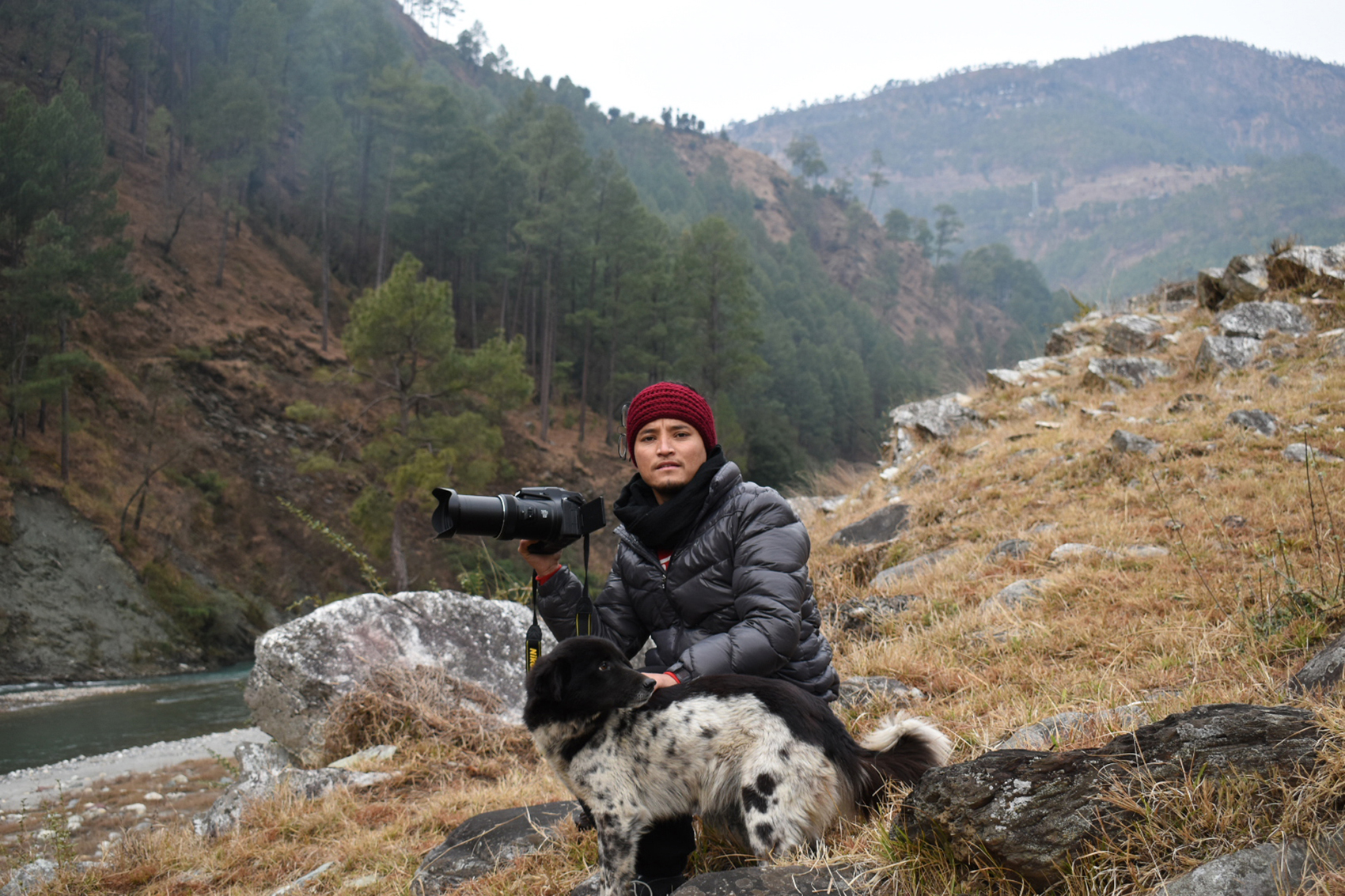 Photo: Rekha Rawat
Photo: Rekha Rawat
To me, a great guide is someone who not only has extensive knowledge of wildlife but is also a great storyteller, and Iqbal possesses both these qualities. Born and raised in a small village in Drass, the 25-year-old’s interest in birding took root during his early childhood spent chasing birds in his backyard and then observing them using his father’s binoculars during his college days.
He fondly recollects sketching the birds he saw, and then going to local internet cafes to identify them. With time, his interest turned into passion and is now a full time profession. He obtained his Master’s degree in Zoology in 2017 and is now pursuing his doctoral research on the Eurasian Magpie of the Ladakh region. Iqbal often engages with the Wildlife Department and other NGOs as a resource person for conducting awareness and educational workshops on wildlife locally. Till date he has sighted over 120 bird species in Kargil district and over 110 birds in Leh district, making him the only local birder topping the list on the popular website Ebird. Some of his memorable sightings are of the Saker Falcon, Black-necked Crane, Eurasian Eagle Owl, Tibetan Partridge, Little Owl, Ground Tit, White-browed Tit Warbler, Bearded Vulture and Golden Eagle.
(Recommended by Muzammil Hussain, the co-founder of Roots Ladakh, a responsible travel outfit based in Kargil, Ladakh.)
Sudha Amma
Thattekad, Kerala
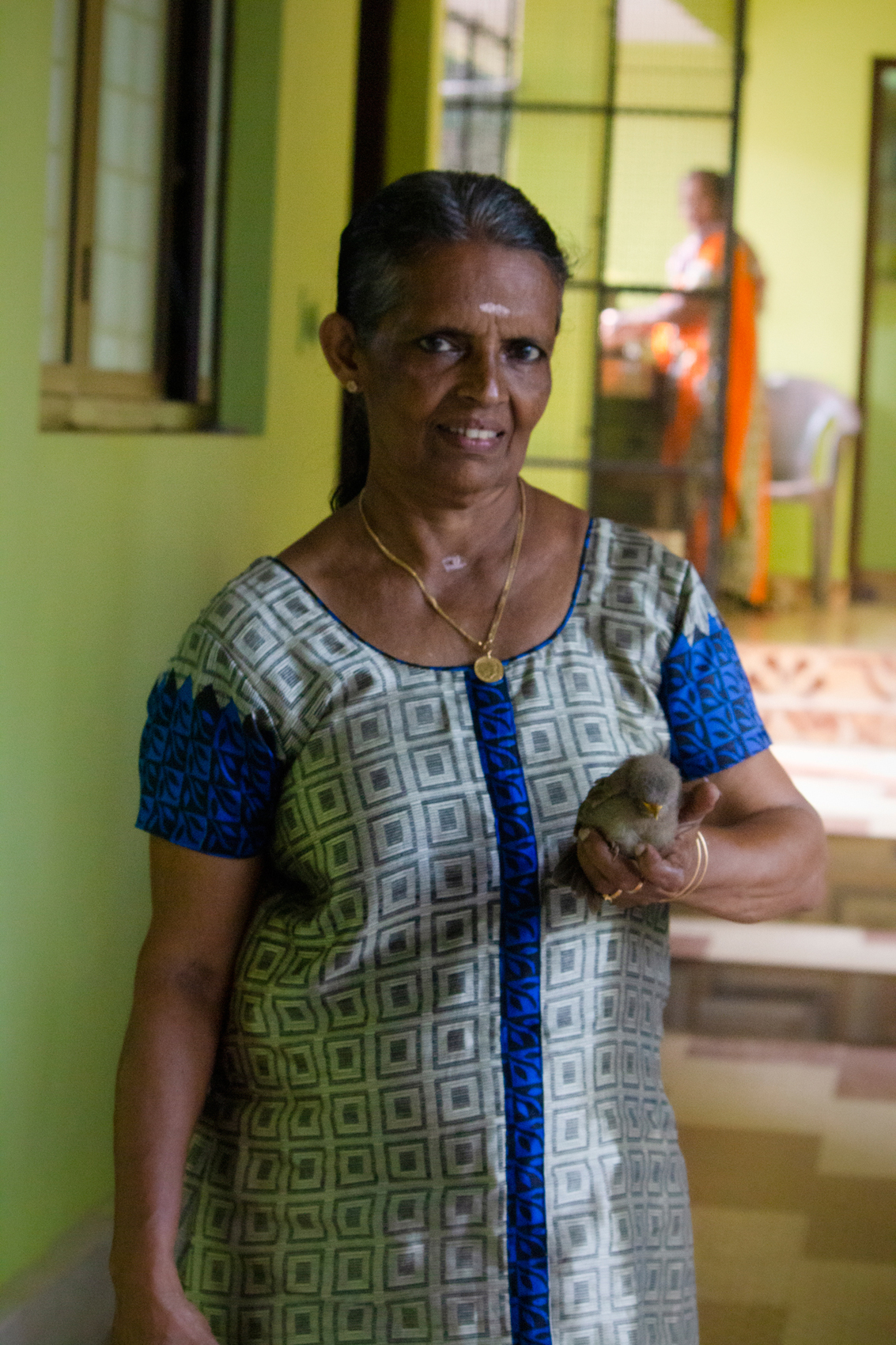 Photo: Balachandran Iyer
Photo: Balachandran Iyer
Sudha Amma is an expert birder with humble beginnings. She used to run a small tea stall near the Thattekad Bird Sanctuary. She soon developed a vivid interest in birds and went on to learn about them under Dr. Suganathan, a student of the late Dr. Sálim Ali. As her passion grew, Sudha Amma established a homestay, the Jungle Bird, for birdwatchers and wildlife enthusiasts. Now she knows about the breeding season, migration, and calls of almost all species of birds found in Thattekad.
Even though she is 65 years old, she walks for hours inside the forest while guiding birdwatchers. Sudha Amma has learned everything from her experience in the forest; hence, she knows where every species comes to roost. If you tell her you wish to see the Sri Lankan Frogmouth, she will smile and lead you to a secret spot that only she knows about and show you the bird. She used to lead trails wearing chappals and a sari, but now says that she has evolved into wearing salwar kameez and shoes. She says as the forest is her temple, she was never afraid of it. She has learned to admire nature and respect these ancient forests.
(Recommended by Dhruvam Desai, a student at Manipal University, a birdwatcher turned photographer, and an aspiring filmmaker whose goal is to raise awareness on Indian wildlife and natural habitats via visual media.)
Niranjana Meshram
Tadoba, Maharashtra
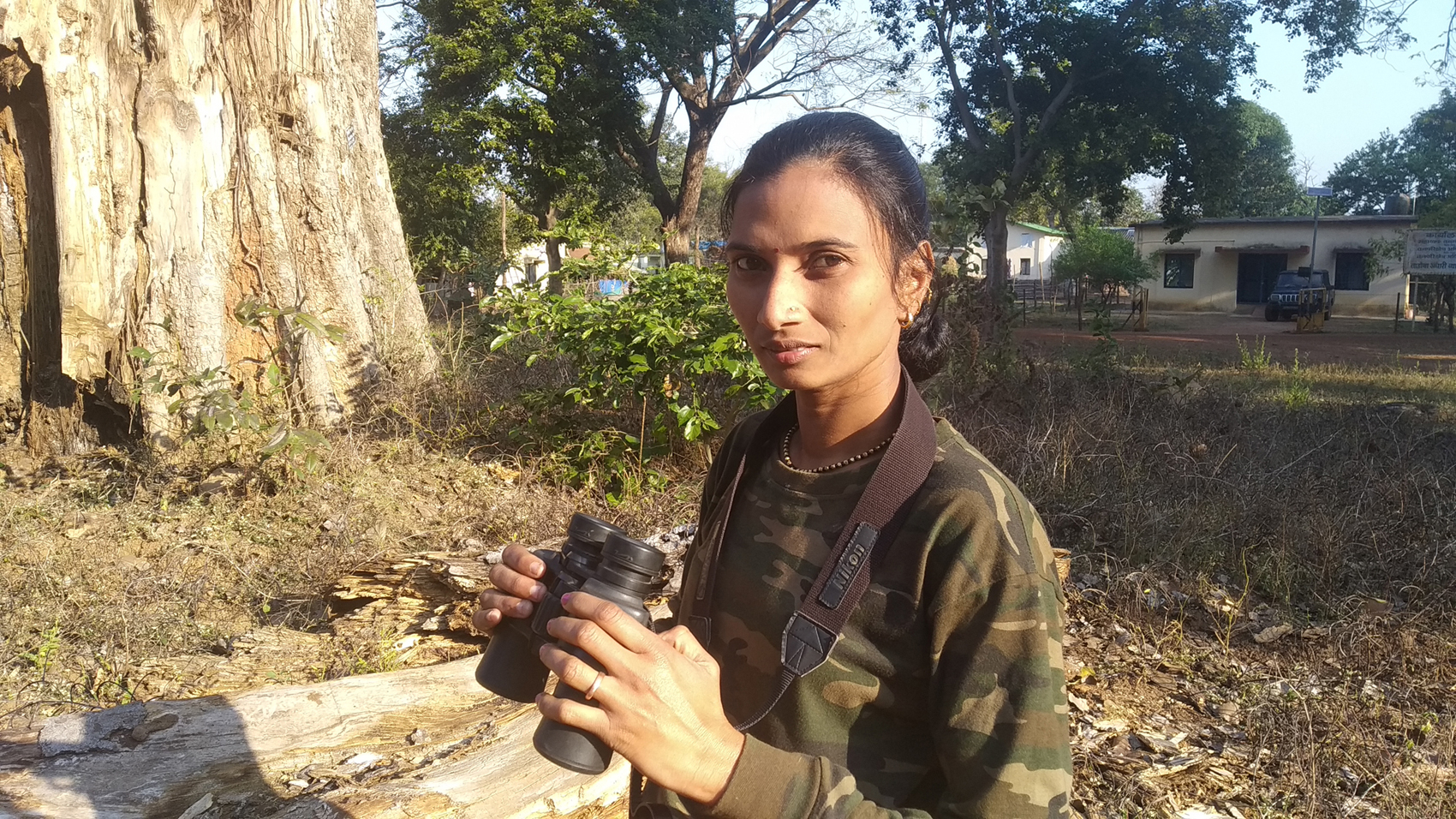
Photo: Pooja Powar
Niranjana Meshram was born and brought up in Moharli village in the buffer zone of the famous Tadoba Andhari Tiger Reserve, Maharashtra. Growing up in this wildlife tourist destination, she contemplated how Tadoba attracts lakhs of tourists each year and realised that there is much more to the park than just tigers. House-hold chores and obligations dominated her life until 2019, when the Forest Department organised a birding workshop. Niranjana pounced on the opportunity to learn about birds around her. With her persistence and guidance from bird experts, she trained her eyes and ears to distinguish species from one another.
Niranjana and several other women now work as bird guides in Tadoba, Moharli. In less than a year’s time the 35-year-old has documented over 200 bird species from the Tadoba buffer and is among the top eBirders in Chandrapur. Birdwatching has become a part of her routine and she enjoys noticing details in the variety of calls, shape and sizes of birds, their habitats and habits. She is captivated by the hunting precisions of the Pied Kingfisher and thinks nocturnal birding is challenging as one may not see birds very often. Niranjana has inspired many local women in Tadoba to convert their love for the nature in their backyards into a profession.
(Recommended by Pooja Pawar, a wildlife biologist whose research focus has been on ecology of hornbills in India.)
Rajesh aka Sira
Masinagudi, Tamil Nadu
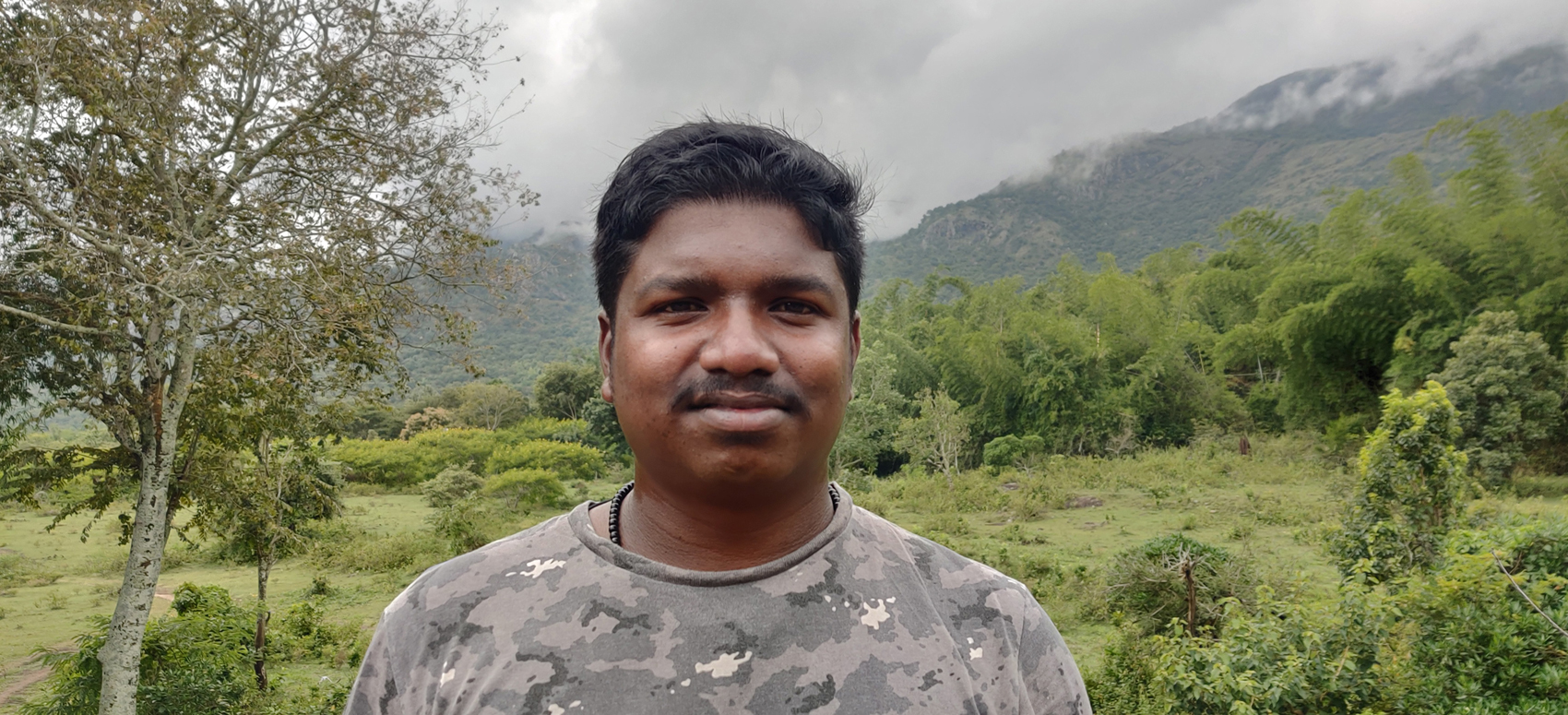 Photo: Rohan Mathias
Photo: Rohan Mathias
Rajesh, affectionately known as Sira, grew up in the Irula village of Thottalingi, a few kilometres from Masinagudi. In 2012, Sira joined Jungle Retreat. His intention was to learn English and to drive, but time spent in the company of the lodge guides fanned a latent interest in birds and wildlife. Initially mentored by older guides, it was not uncommon to find Sira sitting very still on the edges of the forest listening for bird calls. He took cues from birding experts that visited the lodge, and began to draw on his innate capacity for careful observation, no doubt inherited from his Irula bloodline. The son of a daily wage worker who put his three children through school by helping the Forest Department, Sira went on to comfortably converse and share his own knowledge with guests from around the world.
Sira particularly loves owls, and one of his most memorable experiences is of seeing the Spot-bellied Eagle Owl for the first time in the early hours of a morning in 2014. His favourite call is that of the Indian Scimitar Babbler, which he says always makes him feel happy.
To him, the experience of birdwatching is that much more special because it involves a certain delicacy of movement and mindful observation that ultimately leads to discovery of lesser known behaviours. He recalls tracking an Indian Night Jar and her new brood for days and finding that every few days the family would be a few feet away from where they were the previous day. He revels in the mystery of these discoveries, unencumbered by formal instruction.
In 2013, he was presented with a 5D Mark 2 camera. It opened up a whole new world, and he used this camera not only to capture photographs, but as a means to watch birds more closely. Sira says that this increased perception of proximity only fuelled his curiosity further, and we watched as the once-novice birder became a storehouse of new information that he imparted with excitement and sheer joy. The student had become the teacher. He speaks of the local migration of the elusive Nilgiri Thrush with the same reverence as he does when describing the Taiga Flycatcher, an inconspicuous little bird that breeds in the harsh climes of Siberia and Mongolia and makes an arduous journey to the southern jungles of India.
Sira exudes a calm alertness and quiet, unfailing cheerfulness, ever ready to go looking for a bird that he has seen a thousand times.
(Recommended by Smriti Rana and Rohan Mathias who are owners of Jungle Retreat, an erstwhile wildlife lodge dedicated to coexistence. Rohan took over this campus in 1996, planted over 900 trees, mostly endemic and keystone species, re-wilded barren farmland to revive an ecosystem that he considered himself a custodian of. Smriti is a palliative care provider with a passion for wildlife who found her home in Jungle Retreat in 2007.)
Ratan Singh
Bharatpur, Rajasthan
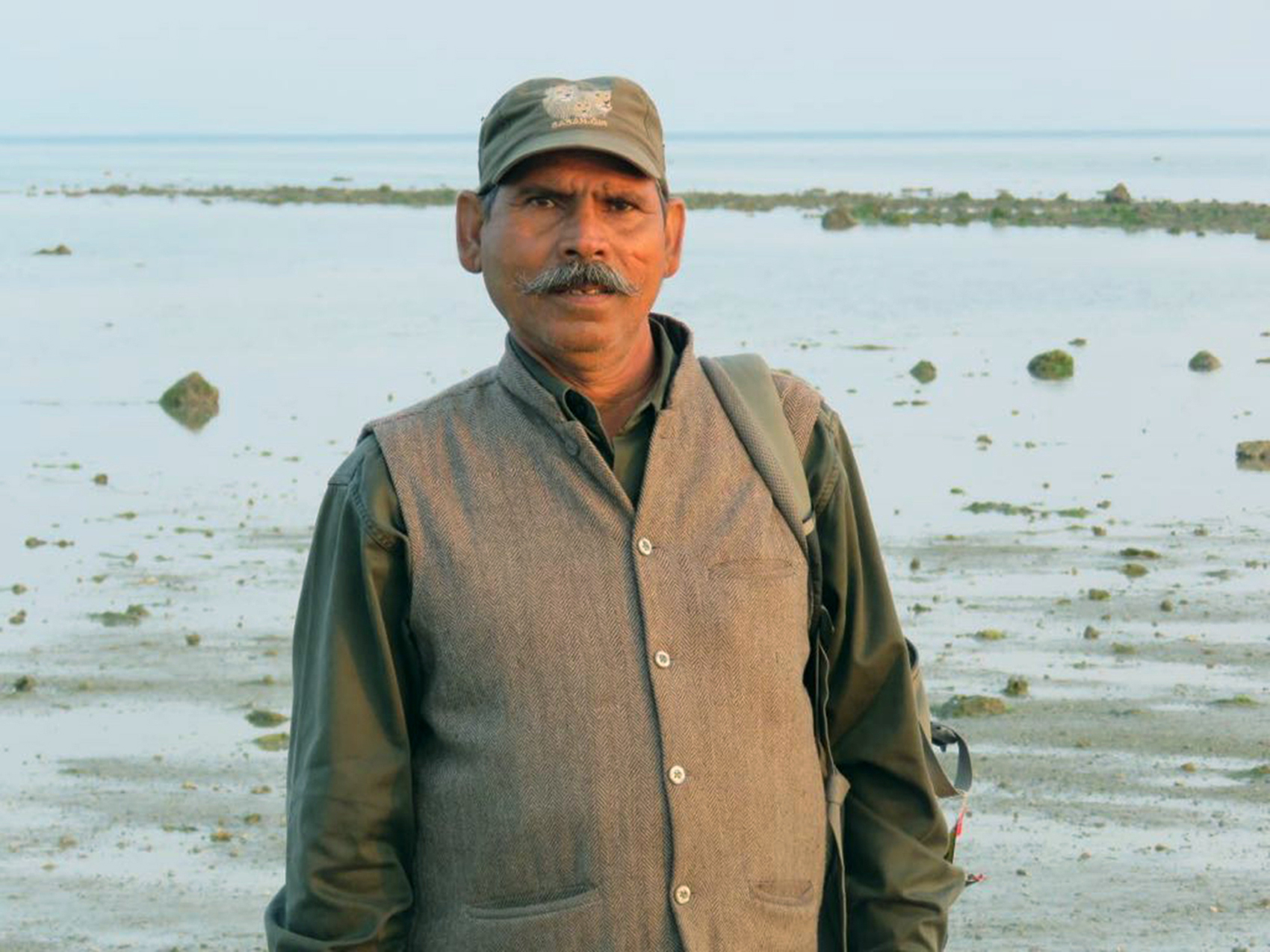 Photo: Bikram Grewal
Photo: Bikram Grewal
I first met Ratan Singh in the early 80s, just after I had written my first book on birds. By pure coincidence, I had booked his rickshaw, in Bharatpur, and so he politely told me that I had misidentified a bird. I was outraged and soon realised that he was indeed right. I then began to delve into his story. He had no books or binoculars. At the earliest opportunity, I got him a set of books, in which he painstakingly transliterated the bird names. A pair of hand-me-down binoculars and he was well on his way. I then started taking him everywhere with me; we traveled to Himachal Pradesh, Uttarakhand, Madhya Pradesh, and several other states. His child-like fascination always amazed me. Soon he was the most sought-after guide in Bharatpur and inevitably he was invited to lead birding trips to other parts of the country. He began getting newspaper reviews and a time came when he was booked solid for three years. Today he runs a lovely homestay called Ibis, and his legacy is intact with his two sons Lokesh and Rahul, who have taken over the bird-guiding business. Ratan Singh has received many awards including the Sanctuary Wildlife Service Award (2004) and I am truly grateful for being a small part of his growth.
(Recommended by Bikram Grewal, author and birding expert, and a keen collector of natural history art.)
Ashlesh “Ash” Sharma
Ranthambhore, Rajasthan
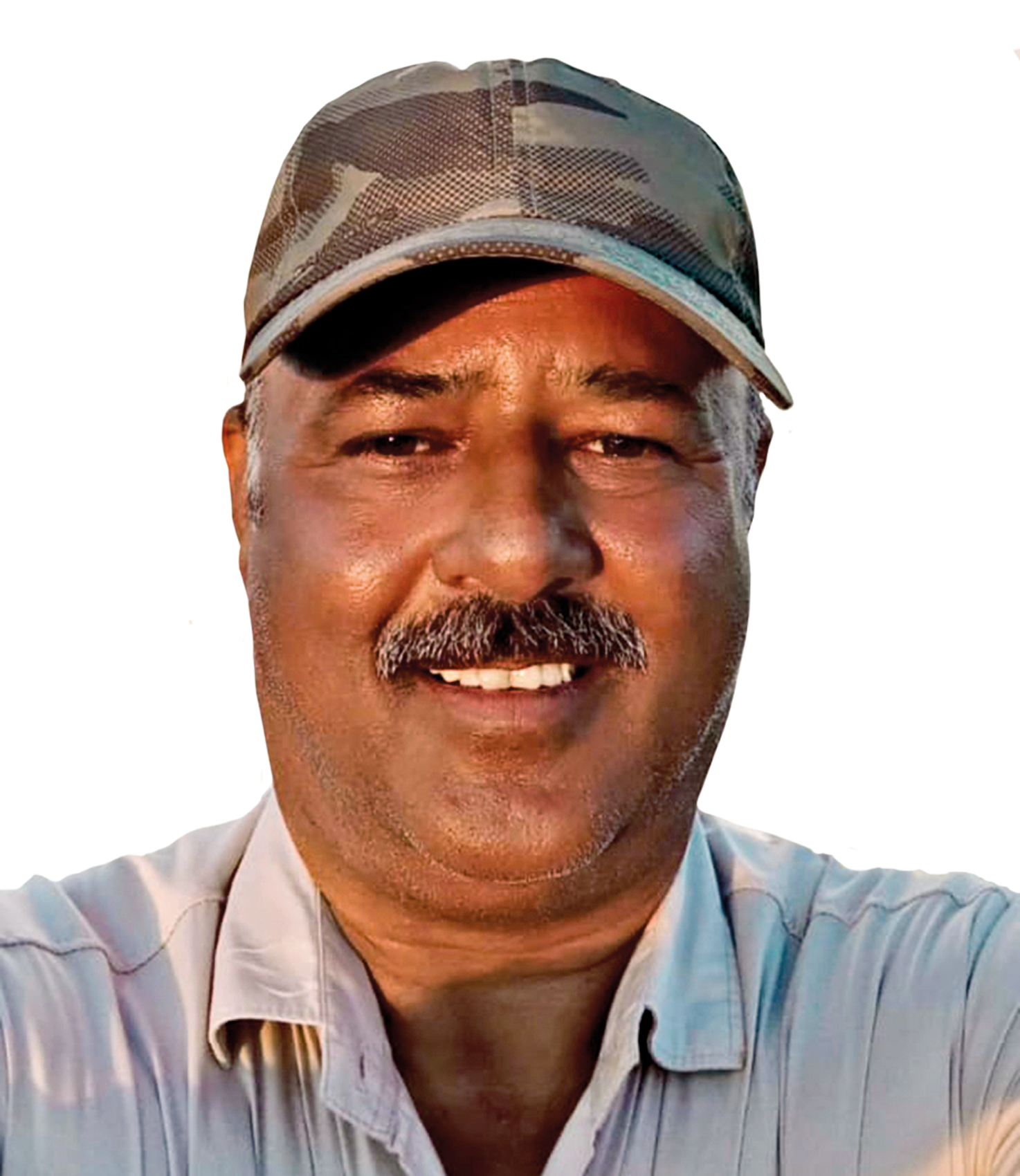 Photo: Aditya Singh
Photo: Aditya Singh
I have known Ashlesh for nearly three decades. He received his guiding license from Bharatpur in the late 1980s and soon relocated to Ranthambhore, to become the first official guide here. In fact, he was the only guide in Ranthambhore until 1993. When we relocated to Ranthambhore, I began spending a lot of time with Ashlesh learning about birds and their habitats around Ranthambhore. In 1999, we expanded on Ashlesh’s personal birding list to get the first exhaustive checklist of Ranthambhore. In a destination that is obsessed with tigers, there was only one guide who knew his birds. He knows the reserve like the back of his hand, is great to be around and is also one of the best trackers in Ranthambhore.
(Recommended by Aditya Singh, a conservationist, wildlife photographer and lodge-owner near the Ranthambhore Tiger Reserve.)
Parag Gharat
Uran, Maharashtra
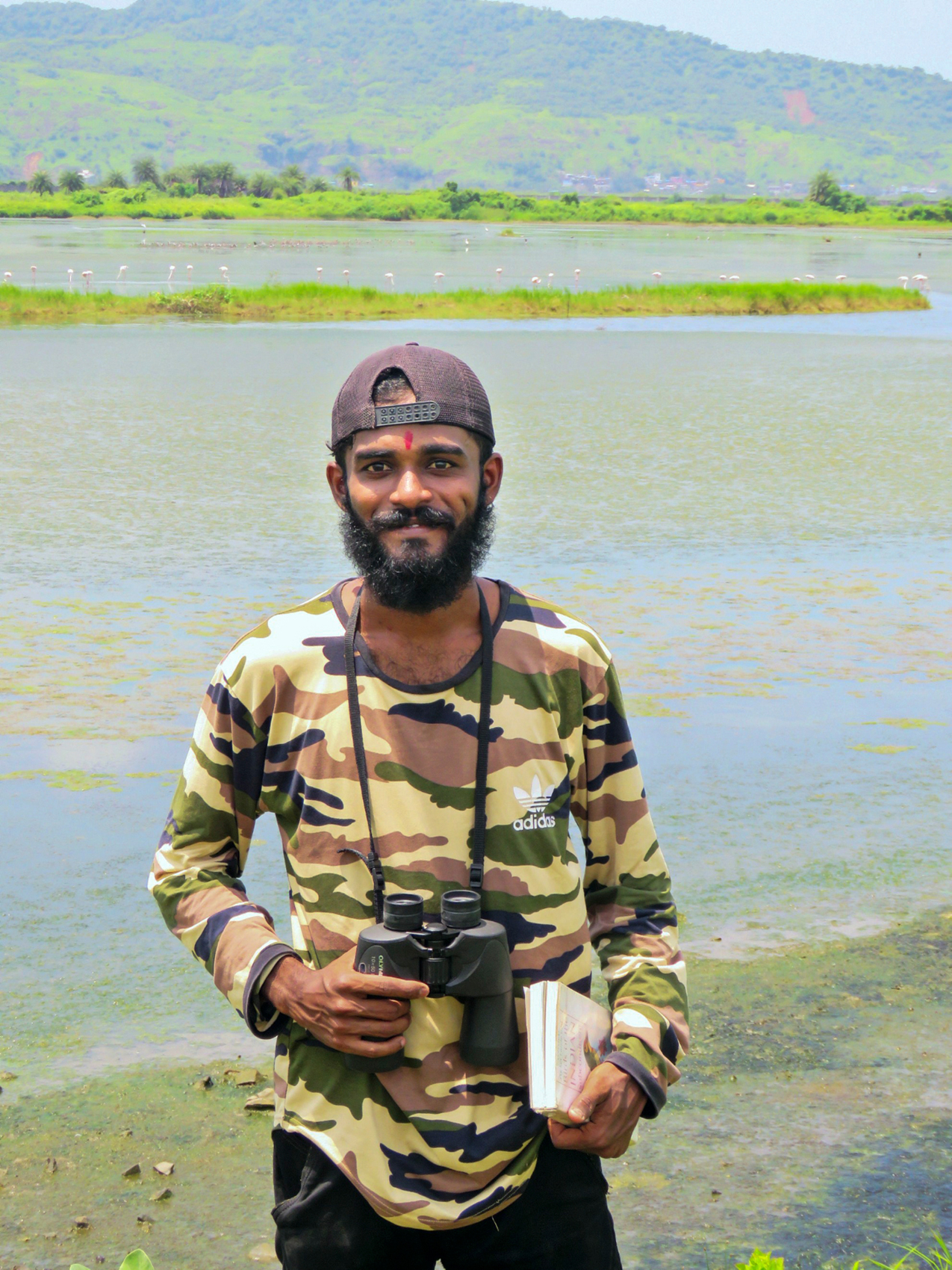 Photo: Parag Gharat
Photo: Parag Gharat
A local fisherman, to a young enthusiastic birder, to an emerging conservation leader fighting to protect the local wetlands – that’s 28-year-old Parag Gharat’s journey. Born in Dongri, a fishing village on the outskirts of Mumbai, his love for birdwatching began early, observing flamingoes and other birds until he started assisting the Bombay Natural History Society (BNHS) with bird rescues. ‘’When people fall sick, they go to doctors, but who is there for our birds?’’ asks Parag, stating that this is why he worked on rescuing injured birds caught in fishing nets. Seeing his passion, he was gifted the Richard Grimmett bird guide (Birds of the Indian Subcontinent) and a pair of binocs by an environmentalist and subsequently, he began identifying the birds visiting the wetlands near his village. As the Panje-Dongri wetlands at Uran gained popularity among the birding community, so did Parag’s name as a bird guide. A great spotter and extremely knowledgeable, he can now identify a bird by simply listening to its call – a skill he has developed over the years. Though he has recorded over 250 species of birds at the Panje wetlands, his prized sighting remains that of a Red-necked Phalarope pair. “Experts say the bird hasn’t been seen at Uran for the last 15 years,’’ says Parag, who is thrilled that he was the first to document such a rare species and be able to spot it for so many keen birders and photographers. He is immensely proud of the wetlands surrounding his village and is working hard with local NGOs to protect them. He has built a network of supporters who inform him of any suspicious activity, which he is quick to report to the authorities. His dedication to preserve the remaining wetlands, where vast stretches of water marsh reeds fuse with the horizon, providing a home to countless birds, has led him to educate his village and surrounding ones on community-led conservation techniques. His role in protecting the wetlands of Uran is invaluable and his commitment to the cause is remarkable. In his words, ‘’When the birds are happy, I am too’’.
(Recommended by Aishwarya Sridhar, a wildlife filmmaker, photographer and presenter. She is currently the host of Nature for Future, a live wildlife chat show series on India’s endangered species on Discovery Channel India.)
Eldhose K.V.
Thattekad, Kerala
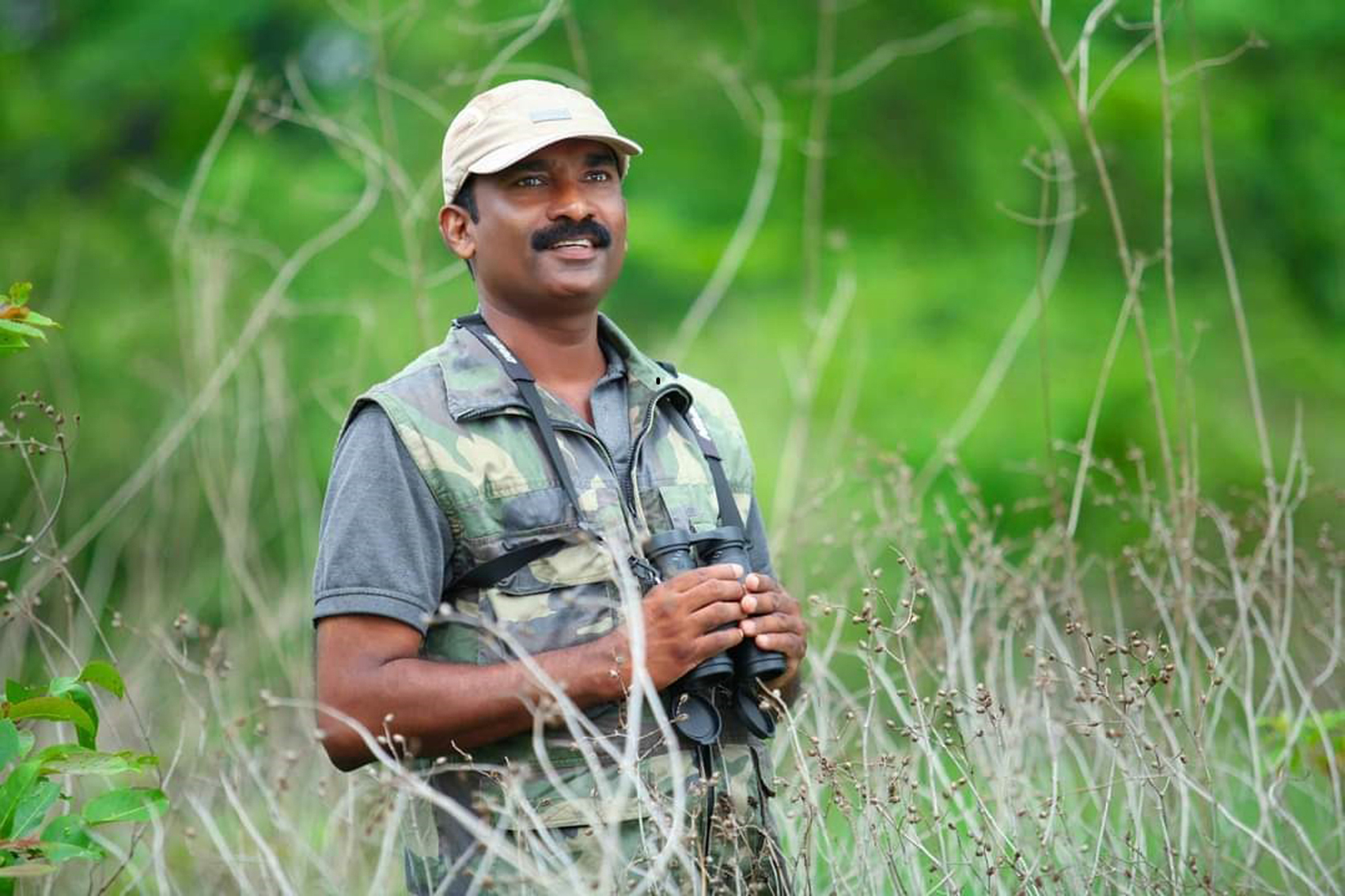 Photo: Ramki Sreenivasan
Photo: Ramki Sreenivasan
I have been a birdwatcher since childhood, but it was only in the early 2000s that I picked it up with some vigour and method. One of the prime drivers was the revolutionary book – A Birdwatchers’ Guide to India by Krys Kazmierczak (see page 116), which laid out precision birding in India by destination. The possibilities boggled my mind. Serious birding was opening up across India. With this trend, the concept of bird guiding emerged. In the beginning most of my trips were in the Western Ghats and there was one guide already well-regarded for his brilliance in showing rarities to clients – Eldhose K.V. from Thattekad.
Eldhose was the first professional guide I birded with almost two decades ago. He had chosen his home ground well. The Thattekad Bird Sanctuary, once described by Sálim Ali as “the richest bird habitat in peninsular India”, lives up to its reputation. While Eldhose’s confidence and knowledge about birds are apparent the minute you meet him, what strikes you most is his humility and unassuming nature. With the right blend of self-assurance and modesty, he claims “300 bird species, including 110 subcontinent Indian endemics, in 10 days or money back.”
We never held him to that promise though! My wife, Swarna, and I, made several trips to the area and continue to do so. Eldhose has a phenomenal eye and barely used any binoculars or spotting scopes. But what truly set him apart was a remarkable understanding of bird behaviour. He had invested countless hours just sitting on the rainforest floor and observing birds. This built an ability to spot birds with ease, and show them to elated clients. In my opinion this ability, having birded with guides across the country, sets him apart. Recently, Eldhose and I went looking for a Ceylon Bay Owl, a subcontinent endemic, in a thick forest patch at 4 o’clock in the morning. He left me by the jungle path and followed the hooting of a pair of bay owls deep into the jungle. Nearby I could hear the unmistakable sound of elephant breaking bamboo. He returned a couple of hours later, just before daybreak, with a huge grin. He had seen one of the owls settle down to roost on a low branch. As the sun rose, I was able to take in cracking views of the owl!
Eldhose started with the humble tented Hornbill Camp and now runs the delightful Eldhose Birding Lodge. With time, more photographers emerged on the birding scene with a constant demand for the “perfect image” of every bird. Eldhose created, like other popular birding lodges, hides that provide great opportunities to photograph a wide variety of Kerala specialities.
But to see the true mettle of Eldhose is to be looking for birds with him on foot in the wet and humid Thattekad rainforests replete with thunderstorms, leeches and elephants. Here he is truly the king.
(Recommended by Ramki Sreenivasan, an entrepreneur, birdwatcher, wildlife photographer and co-founder of Conservation India.)









